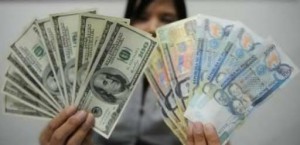2015 Outlook, part 7
By Randell Tiongson on January 20th, 2015In this installation of the 2015 Outlook series, my friend James Lago of the PCCCI once again gives us his highly valuable views on many factors that will affect 2015 — Economic growth, stock market, US dollars, interest rates, liquidity and more. His outlook will be very helpful as to those who are taking a closer look at their portfolios.
The 2015 Outlook of James Lago
Economy – For 2015, our initial GDP growth forecast range is 6.0% – 6.6%. This baseline assumption is premised on the following growth rates of the major industry groups: industry growing by another 6.5%, services expanding by 6.0% and agriculture posting a 2.5% growth. On the expenditures side, we firmly believe that the substantial decline
in energy prices will translate to increased disposable income which in turn will translate to household spending (HFCE) projected to rise by 5.5% – 6.0%.
The major dividend from lower energy prices is lower inflation. Factoring in our anticipated peso-dollar exchange rate this year, our initial average inflation forecast for the year ranges from 2.1% – 2.5% using the 2006 base year.
PSEi – The bullish trend since its recovery in 2009 remains intact. A fresh historic high of 7,413.62 was achieved as the bull market completed its 6th consecutive year last year.
2015 starts with the leading and trailing relative valuations above its historical averages, as well as the regional average again. The lower energy price benefits will certainly be this year’s major driver. Investors are optimistic that the Philippine economy could post a 6.0% GDP growth rate, at least, for this year. Corporate
earnings will most certainly improve as a result of margin improvement and higher volume sales. Our base case scenario for the PSEi this year is a rise to 7,500 – 7,800. Healthy corrections in between is expected and we see the supports at 6,800 and 6,650.
Peso – US dollar – For this year, with the dollar index firmly above the key level of 90, and as funds flow back into US dollar assets, we see the peso probably depreciating to 46.00 or even 47.00. It will result in a 61.8% to 66.0% retracement of its October 2008 – January 2013 appreciation. On the appreciation side, an appreciation to 44.50 or even 44.00 cannot be discounted within the year as the country will continue to attract both FDI and portfolio inflows given its continued growth prospects and its investment grade rating.
dollar assets, we see the peso probably depreciating to 46.00 or even 47.00. It will result in a 61.8% to 66.0% retracement of its October 2008 – January 2013 appreciation. On the appreciation side, an appreciation to 44.50 or even 44.00 cannot be discounted within the year as the country will continue to attract both FDI and portfolio inflows given its continued growth prospects and its investment grade rating.
Domestic Fixed Income Yields – Real returns on the short-term yields remained negative anew in 2014 despite the sell-off in the latter part of the year. The year ended again with a normal yield curve whose steepness was reduced as the spread between the average short and long-term yields narrowed sharply to 160.30 bps, way below its 250 – 300 bps range.
Excess liquidity and portfolio flows into peso-denominated fixed income securities will most likely keep the continued rise of domestic yields gradual overall. The negative real returns on short-term yields in 2014 might not be absurd compared to the past few years. The flattening of the country’s yield curve, a historical first, is a possible scenario. The spread between the average short-term and long-term yields will most likely move within a 200 – 250 bps range within the year as investors will continue to find ways around the yield levels. The yield curve is also seen to remain essentially normal in 2015 with yields in between 2009 and 2012 yield levels.
Portfolio Strategy – Our overall core equity strategy for this year continues to be anchored on the soundness of a firm’s core business model and its stock’s key relative valuations, PER and PBV, trading at a discount to the PSEi’s averages. Cognizant of the benefits of lower energy prices on consumption spending and the fact that consumer-related or proxy stocks’ relative valuation are trading at a premium to the market’s averages, we chose only those whose premiums are reasonable enough to give investors a better upside potential. As a whole, lower energy prices will be beneficial to most firms by way of improved margins and increased volume sales. Several of the stocks in our short list also have attractive, above market average dividend yields.
Given the potential of a near flattening of the country’s yield curve, driven by the normalization of short-term yields and the low inflation scenario, corporates are seen to continue taking advantage of still affordable medium to long-term yields. We continue to encourage investors to take a serious look at the existing PSE-listed preferred
shares and possible new offerings in 2015 as the yields will remain attractive. For fixed income securities, investors will have to be opportunistic again, taking advantage to purchase, when yields touch attractive levels within the year. It is still best to diversify the fixed income portfolio across various tenors to optimize the portfolio yield. The suggested average tenor or duration of the portfolio must be within the short to middle-tenor ranges as yields on the long dated instruments are not attractive for now.
 Joseph James Lago is the Head of the PCCI Securities Brokers Corp. He has over 2 decades of experience in the investments industry in various capacities. He is also a professor of the De La Salle University Graduate School teaching in Management and Economics. He is a much sought after researcher, economist and analysts. He is a Registered Financial Panner.
Joseph James Lago is the Head of the PCCI Securities Brokers Corp. He has over 2 decades of experience in the investments industry in various capacities. He is also a professor of the De La Salle University Graduate School teaching in Management and Economics. He is a much sought after researcher, economist and analysts. He is a Registered Financial Panner.

